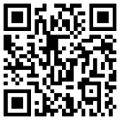Development Of Interactive Media With Contextual Teaching Learning To Enhance Vocational Schools Student Creativity In Malang
Abstract
Full Text:
PDFReferences
A. Azhar, Media Pembelajaran. Jakarta: PT. Raja Grafindo Persada, 2013.
W. Wiana, M. Syaom Barliana, and A. A. Riyanto, “The effectiveness of using interactive multimedia based on motion graphic in concept mastering enhancement and fashion designing skill in digital format,” Int. J. Emerg. Technol. Learn., vol. 13, no. 2, pp. 4–20, 2018, doi: 10.3991/ijet.v13i02.7830.
W. Wiana, “Application Design Of Interactive Multimedia Development Based Motion Graphic On Making Fashion Design Learning In Digital Format,” Int. J. Sci. Technol. Res., vol. 4, no. 8, pp. 102–108, 2015.
A. D. Rachmawati, B. Baiduri, and M. M. Effendi, “Developing Web-Assisted Interactive Media to Improve Mathematical Creative-Thinking Ability,” Al-Jabar J. Pendidik. Mat., vol. 11, no. 2, pp. 211–226, 2020, doi: 10.24042/ajpm.v11i2.6505.
E. E. Rohaeti, M. Bernard, and R. B. Primandhika, “Developing interactive learning media for school level mathematics through open-ended approach aided by visual basic application for excel,” J. Math. Educ., vol. 10, no. 1, pp. 59–68, 2019, doi: 10.22342/jme.10.1.5391.59-68.
S. C. W. Sari, M. Murdiono, K. Fenditasari, and I. S. Rukmana, “Indigenous Srimpi Pandelori As Android-Based Civic E-Learning Media Toward Students’ Creative Thinking Skills Engagement,” JPI (Jurnal Pendidik. Indones., vol. 8, no. 2, p. 276, 2020, doi: 10.23887/jpi-undiksha.v8i2.22925.
Firdaus and F. Dewi, “Application of Contextual Teaching and Learning (CTL) Components In Telecommunication Network Design and Optimization Course,” Int. J. Chem. Educ. Res., vol. 2, no. 1, pp. 24–33, 2018.
A. Fadillah, N. P. L. C. Dewi, D. Ridho, A. N. Majid, and M. N. B. Prastiwi, “The effect of application of contextual teaching and learning (CTL) model-based on lesson study with mind mapping media to assess student learning outcomes on chemistry on colloid systems,” Int. J. Sci. Appl. Sci. Conf. Ser., vol. 1, no. 2, p. 101, 2017, doi: 10.20961/ijsascs.v1i2.5128.
N. Aldoobie, “Sprachwandel in übersetzungsbearbeitungen zwischen 1846 und 1999,” Am. Int. J. Contemp. Res., vol. 5, no. 6, pp. 68–72, 2015.
S. Akbar, Instrumen Perangkat Pembelajaran. Bandung: PT Remaja Rosdakarya, 2013.
S. Arikunto, Prosedur Penelitian: Suatu Pendekatan Praktik. Jakarta: PT Rineka Cipta, 2013.
Y. Rima Liana and S. Linuwih, “Interactive Mobile Learning Media To Improve Students’ Hots Ability Supported With Problem-Based Learning Model,” 2016.
U. Darmawan, S. Redjeki, and W. Widhorini, “Interactive multimedia: Enhacing students’ cognitive learning and creative thinking skill in Arthropod material,” JPBI (Jurnal Pendidik. Biol. Indones., vol. 6, no. 2, pp. 257–264, 2020, doi: 10.22219/jpbi.v6i2.11370.
DOI: http://dx.doi.org/10.17977/um010v4i22021p39-46
Refbacks
- There are currently no refbacks.
 | Letters in Information Technology Education (LITE) |

1.png)
1.png)
4.png)
1.png)
.png)
.png)

3.png)
1.png)
1.png)

3.jpg)